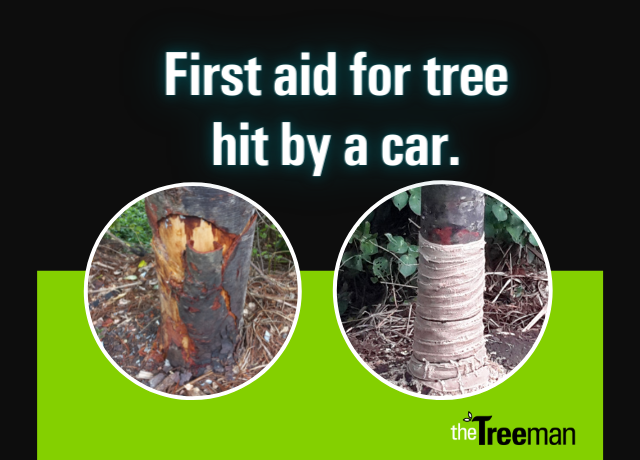
Ringbarking damage on trees.
When this tree was hit by a car it lost substantial cambium and bark, crucial for the transport of water and food required for its survival. Such damage has a high chance of resulting in the fatal demise of the tree.
When a tree has suffered significant damage by ringbarking there are some first aid measures you can initiate to improve your trees’ chances of survival.
Place any bark that is still attached back in the wound, and pack it with sphagnum moss wrapping the area with hessian tape. This may help the tree to seal the wound as it develops callus tissue over the injured area.
The process could take many months, so ensure you check the tape regularly. Keep it moist and replace it as required.
As the tree fights for survival and learns to cope with a compromised transport system, you will need to make sure the tree has plenty of water and food and reduce further stress by controlling pests and diseases. As always, a healthy tree will have a much better chance of recovery than a tree that is already struggling.
For a special tree with emotional or aesthetic value, it is certainly worth the effort of trying to save it before defaulting to removal.
If the tree starts to decline despite your best efforts, safety should always be a consideration for persisting with keeping a dying tree.
If the tree has suffered removal of bark all the way around the tree, there is little hope of survival. The bark will not grow back as trees do not heal in this way.
If there is minimal damage, the tree will try to seal off the damaged area in an attempt to prevent further complications and strive to resume some level of health.